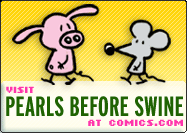
NAPPA NEWS
by Arlen M. Wilburs, DVM
The mini pig has become an increasingly popular companion animal, largely because of its relative intelligence, strong human bonding characteristics, and trainability. Pig ownership has led to many problems, including legal battles, human-pig conflicts, and the general lack of health care knowledge among owners and veterinarians alike.
GOOD HEALTH
Feeding
Many factors affect the physical health of your mini pig; however, one of the most important common mistakes is overfeeding, thus over conditioning of mini pigs. This is probably due to the concept we have entertained since childhood of a fat, rounded pig who will eat anything. But remember the fate of that pig?
Health body condition does not include a pendulous belly and fluctuant jowls. Ribs should not be visible, but should be easily felt. Jowls should not obscure the jaw and fat rolls on the face should be absent.
Obesity predisposes your pig to tendon determinites in the legs, poor foot wear, and entropion that may progress to mechanical blindness. Obesity also puts your pet into a bad surgical risk category should emergency surgery be necessary, not to mention long term heart problems and other organ failures.
How much to feed depends on your pig's condition and activity level and must be adjusted as needed. There is no easy formula. Diet should consist of a commercial balanced and formulated mini pig food, grazing time, and small vegetable treats. Dog and cat foods are too rich in protein and calories and are not balanced for pigs. Fruits have sugar in them and these tend to increase weight gain. Many owners supplement vitamins. This is usually unnecessary if the pigs are on a commercial diet but rarely causes a serious problem. Consult your veterinarian concerning your pig's condition and diet.
Environment
Proper environment is also important in maintaining health. Another common problem is irregular foot wear and lack of exercise leading to dropped pasterns. As was said earlier, weight is a contributor to this problem. Foot trimming has become necessary in companion pigs due to the surface they live on. Carpets, hardwood floors, grass and linoleum do not wear feet enough to keep up with nail growth. Allowing the nail to become long shifts weight back onto the padded heel and stretches the flexor tendons over time, which in turn causes less exercise and an acceleration of this condition. This can be avoided by keeping weight off your pet and exercising on a granular surface such as concrete. If this is not possible, frequent trimming will be necessary.
Many other factors contribute to good health such as consistent feeding, water consumption, and avoidance of toxic substances or plants. Emotional factors such as corrective discipline, affection, bonding, pecking order, and boredom are also extremely important and would require entire articles to do justice to them.
SELECTING A VETERINARIAN
One of the most important decisions you will make in the health of your pig is which veterinarian you will use. Most veterinarians are either farm animal or companion animal oriented. Companion animal veterinarians in general are unfamiliar with pig diseases, medicines, and physiology and are uncomfortable handling pigs that can be quite vocal and disrupt their practice environment. Farm animal veterinarians are more familiar with pigs but not in a companion form and may find it difficult to incorporate pet animal mentality into their thinking. Also farm vets are no longer available in many area, so choosing a vet becomes a serious dilemma.
Here are some recommendations that may help. First, make sure the practitioner is willing to learn, has a personable manner, and is willing to say "I don't know." Ask about their experience with mini pigs. Talk with other pig owners who use that veterinarian and listen to their opinions and experiences. Find out about vaccinations used and routine care practiced by the veterinarian. Here are some guidelines.
Vaccinations
Vaccinations should include Erysipelas, Bordatella, and Pasturella on a yearly basis after an initial double does at 6 - 10 weeks and 12 - 14 weeks. Tetanus should be given on a yearly basis. Leptospirosis 5-way and Parvovirus are recommended for breeding females. Be careful--reactions to lepto vaccinations are common. Rabies is not approved for pigs. Pigs are resistant to rabies and are very unlikely to contract his disease. Cat and dog vaccinations are unacceptable. Lymes vaccine is not approved in pigs. Remember, vaccinations are expensive and if they are doubtful in value, should be avoided, especially since occasional reactions do occur.
Anesthesia
Anesthesia--technique, use and type--are extremely important and could greatly affect the health of our pig. Inhalant anesthesia, using Isoflorane and no pre anesthesia such as atropine or phycopyrilate, is probably the safest, easiest and best, but is expensive. Quick recovery and few side effects are expected. Halothane should be safe as well since the malignant hyperthermia gene is not present in mini pigs. Injectable anesthesia is seldom a viable alternative.
Injection sites in pigs are difficult to reliably know if the dose was administered to fat, muscle, or blood, which in each case can have a widely different effect on level of anesthesia and recovery time. Violent recoveries are the norm. If IV catheters are present, injectable anesthetics are much cheaper and more effective.Anesthesia should be used for castration, spaying, entropion surgery or any major surgery. Anesthesia is not necessary for hoof trimming, vaccinations, or trimming of small tusks. As tusks increase in size, anesthesia may become necessary. In general, less anesthesia, less risk.
About the Author:
Dr. Arlen M. Wilbers, a veterinarian currently practicing at the Quakertown Veterinary Clinic in Quakertown, PA., has approximately 300 potbellied pig patients. He has participated in various seminars on the east coast and has lots of valuable information to share about the care of our potbellied pigs.









No comments:
Post a Comment